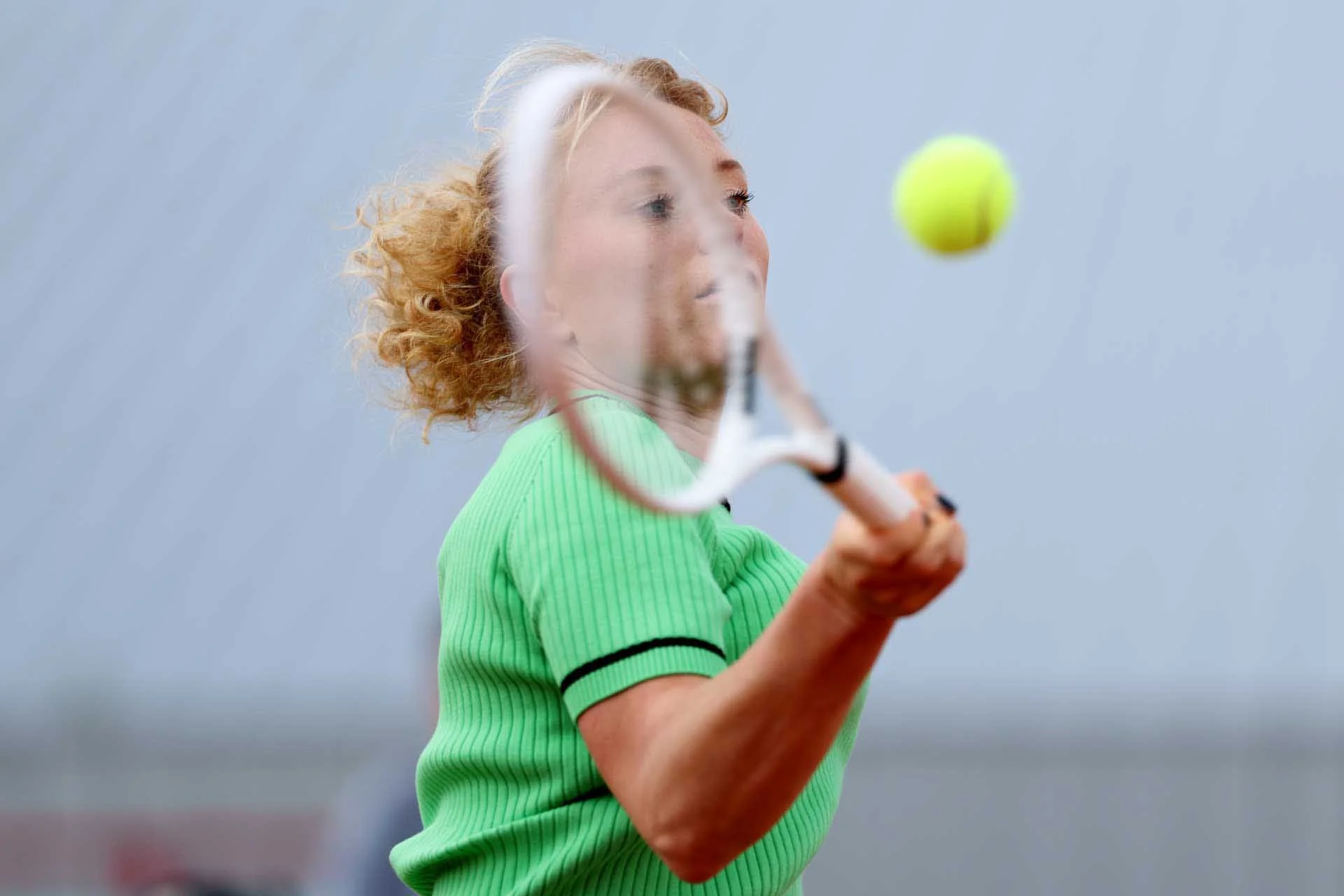Canon EOS R1 Hands-on Review
Summary Verdict
The Canon EOS R1 is the highly anticipated mirrorless successor to the EOS-1D X Mark III, Canon’s flagship DSLR. It’s designed for professional photojournalists and sport or news photographers. With a 24.2 MP sensor, dual processors and an advanced autofocus system, it can capture fast-paced action at up to 40fps. The Pre-shooting mode is a great addition for sport and action photography, making it easier than before to record critical moments.
Its robust, weather-sealed build and ergonomic design should ensure the reliability we expect from Canon’s top-flight camera, while the controls facilitate quick adjustments. The top-tier electronic viewfinder and vari-angle touchscreen enhance the shooting experience, and its 6K raw video capabilities make it useful for multimedia professionals.
Overall, the Canon EOS R1 looks like a great flagship camera.
Read our Canon EOS R5 Mark II review
Score: TBC
For
New stacked 24-million-pixel full-frame sensor
Cross-type AF system with advanced subject detection
40fps continuous shooting with Pre-continuous shooting
Against
High price
Complex set-up
Big and heavy
What is the Canon EOS R1?
The dual-gripped Canon EOS R1 is Canon’s flagship camera, taking the place previously occupied by the Canon EOS-1D X Mark III. While the EOS-1D X Mark III is a DSLR, the Canon R1 is a mirrorless camera. It’s designed for professional photographers and content creators with an emphasis on speed for capturing newsworthy moments.
The Canon R1 is above the R3 (released in September 2021) and the Canon R5 Mark II (announced at the same time) in Canon’s camera lineup.
Read our Canon EOS R6 Mark II review
Canon EOS R1 Price and Availability
The Canon R1’s price will be £6,999.99 / €7,999.99 body-only, and it’s set to go on sale in November 2024.
Canon EOS R1 Specifications
Camera Type: Mirrorless
Announced: 17th July 2024
Sensor: 24.2 MP Full-frame stacked BSI CMOS
Processor: Digic X and Digic Accelerator
Lens mount: RF
Still s file formats: 14-bit Raw, C-Raw + Jpeg/HEIF
Continuous shooting rate: Electronic shutter: 40fps for 500 JPEG or 230 RAW images, Mechanical shutter: 12 fps for 1000+ JPEG or 1000+
RAW images
Maximum video resolution: 6K raw at up to 60fps
Sensitivity: ISO 100-102,400, expandable to ISO 50-409,600
Autofocus system: Dual Pixel Intelligent AF with subject detection and cross-type sensors
AF Tracking options: Humans (Eyes, Face, Head, Upper half of body, Body), Animals (Dogs, Cats, Birds and Horses) or Vehicles (Racing cars or Motorbikes, Airplanes and Trains), Register People Priority (up to 10 x 10 registered people), people),
Action Priority (Football, Basketball, Volleyball)
Viewfinder: 0.64-inch 9.44million-dot OLED electronic viewfinder
Screen: 3.2-inch 2.1-million dot vari-angle touchscreen
Stabilisation: In-body image stabilisation (IBIS) that works with lens IS and enables up to 8.5-stops of shutter speed compensation
Storage: Dual slots, 2x CFexpress and
Dimensions (WxHxD) : 157.7 x 149.5 x 87.3mm
Weight: 920g body only and 1115g with a memory card and battery
The Canon EOS R1 has a vertical and a horizontal grip.
Features
The Canon EOS R1 has a new 24.2 MP full-frame back-illuminated stacked CMOS sensor. This sensor is specifically designed for the R1 and offers a fast data readout that significantly reduces rolling shutter distortion compared with previous Canon cameras, including the R3. It also features a 16-point high-detail low-pass filter for greater detail capture, making images appear even sharper and more vibrant than with a regular low-pass filter. Those two processors and the news sensor are also claimed to boost the R1’s overall performance.
For those occasions when 24.2MP images aren’t big enough, the R1 has an in-camera upscaling feature that enables it to produce images of up to 96MP.
The EOS R1 is engineered for speed and, like the Canon R5 II, its sensor is joined by two processors, a Digic X processor and a Digic Accelerator, to deliver what Canon calls ‘Accelerated Capture’. As such, it boasts a maximum continuous shooting rate of up to 40fps (frames per second). This rate is highly customisable, with options to shoot at 30, 20, 15, 12, 10, 7.5, 5, 3, 2 and even 1 frame per second, allowing photographers to adapt to different shooting situations.
Another feature that will be of interest to anyone wishing to capture split-second moments is Pre-continuous shooting mode. When this is selected, the R1 starts buffering images as soon as the shutter release is half-pressed. It writes 20 images to the sensor at the selected shooting rate from the moment before the button is pressed home, and it continues to write images until the button is released.
Like the Canon R5 II announced at the same time, the Canon R1 has an advanced autofocus system called Dual Pixel Intelligent AF. However, the R1 has a little more to offer than the R5 II in this respect as it’s the first camera in the EOS R series to feature cross-type AF points. This means that it has both vertical and horizontal line detection for faster and more accurate focusing. This technology ensures superior performance, particularly in low-contrast environments, making it easier to maintain focus on fast-moving subjects.
There’s a new Action Priority mode in the second page of teh AF section of the Canon R1’s menu.
What’s more, there’s a new Action Priority option that can be set to football, basketball or volleyball. The Canon R1 then looks for the player making the most significant action in the game and focuses on them - it doesn’t just follow the ball.
There are three sports available for selection in the R1’s Action Priority mode. I anticipate more being added over time.
Canon has also used its latest advanced deep learning algorithms to improve eye detection, ensuring that subjects remain sharply in focus, even in challenging conditions.
The new Registered People Priority mode is also on hand to allow you to prioritise up to 10 people for focusing. It’s possible to store the registration data for up to 100 people on a memory card ready to transfer to the camera.
Like the Canon R5 II, the EOS R1 has an updated version of the Canon R3’s Eye Control Autofocus system. This allows the focus target to be selected just by looking at it. According to Canon, this has been improved for the R5 II and R1 by a new eye detection algorithm and a larger eye detection area so the rate of detection is twice that of the R3’s.
Essential to some professional applications such as photojournalism and sport photography, the EOS R1 features advanced connectivity options, including built-in 2.5G Ethernet for fast, reliable data transfer. The camera also supports Wi-Fi 6, ensuring quick and efficient wireless communication.
Canon EOS R1 Video Features
While the Canon EOS R1 is predominantly aimed at photographers, it’s still a very capable video camera with a top resolution of 6K raw video at 60fps (frames per second). Slow-motion footage can be of particular use for news-gathering, and the R1 can record 4K video at up to 120fps and 2K video recording at up to 240fps.
The R1 also features Canon’s C-Log2 profile (as well as C-Log3), delivering up to 16+ stops of dynamic range for greater colour grading capability and detail retention in both shadows and highlights.
As we’d expect, the EOS R1 supports ProRes RAW output to Atomos recorders, and there’s a full-size HDMI port for easier external monitor connection.
It’s also good to see a tally lamp to indicate when the R1 is recording, and four-channel audio support.
Features Summary
The Canon EOS R1 is a complex camera with a huge array of features, but here’s a headline summary:
New imaging platform including the Digic Accelerator and Digic X processors along with newly developed high-speed image sensors.
Dual Pixel Intelligent AF for enhanced autofocus with the ability to track faces and upper bodies, even avoiding obstacles and other players.
Action Priority Mode in which the camera automatically identifies and tracks action in basketball, soccer, and volleyball.
A cross-type AF system that’s designed to help with low light and low contrast conditions by locking on to vertical and horizontal details.
High-speed shooting at up to 40fps using the silent electronic shutter with AF tracking and 20 frames of pre-continuous shooting.
High-resolution 0.64-inch viewfinder with 9.44M dots.
Enhanced image quality benefiting from Deep Learning for in-camera image upscaling and noise reduction, achieving up to 96MP in-camera.
Stabilisation offering up to 8.5 stops of image stabilisation.
Advanced video capabilities with up to 6K resolution at 60fps, 4K at 120fps, and Full HD at 240fps with internal 12-bit RAW recording and Canon Log 2 and 3.
High-end connectivity with Wi-Fi 6E/11ax 6GHz, 2.5Gbps Ethernet connectivity, and dual-threaded FTP in the body.
Professional workflow support with features such as industry-standard file naming, separate photo/video folders, and advanced tagging in News ML-G2 standard.
Weather-resistant body with an integrated vertical grip.
The Canon EOS R1 uses the same type of mode button and dial arrangement as the Canon R5 Mark II (announced at the same time) and the older Canon R3.
Build and Handling
The Canon EOS R1 is a double-gripped camera, meaning it has a vertical grip integrated into it as well as the usual horizontal grip. The two grips give easy access to the key features, including a shutter release whether you’re shooting in portrait or landscape orientation. It also means the R1 can accept a larger battery.
At 920g without the battery and memory card, and 1115g with a card and battery, the R1 is around 330g lighter than the Canon EOS-1D X Mark III. However, it’s around 98g heavier than the R3. Consequently, the R1 is a hefty camera, but it’s well-suited for use with long, heavy lenses of the type often seen at major sports events.
Both grips on the R1 feel comfortable and afford your fingers plenty of room. Like the R3, the R1 has a modern-looking textured coating over the grips and much of the body apart from the top and bottom plates. While the R3’s texture is honeycomb-shaped, R1’s has a subtler hatched pattern.
The Canon R1 is a large camera with two deep, comfortable grips. The controls on the right side of the back of the camera are all within fairly easy reach, although big hands are an advantage. My thumb is on the AF-On button in this image.
According to Canon, the R1 is dust and weather-resistant to the same level as the EOS-1D X Mark III, and it feels robust.
Anyone who has used the Canon R3 will feel at home with the Canon R1 as although the flagship camera has a few extra buttons here and there, their control arrangements are very similar. On the top plate, for example, there’s a mode button and surrounding control dial next to a small screen that shows key settings, plus a front dial and a smattering of buttons for setting drive, focus, metering, exposure compensation, flash exposure compensation and white balance modes. The R1 also gains a dedicated white balance button and the illumination button accesses the crop controls in review mode.
The control arrangement on the rear of the R1 is almost identical to the R3’s, but the Rate button on the top left next to the Menu button is labelled M-Fn3. The Rate button is below the screen, along with the playback, magnify, and delete buttons.
My thumb is on the Canon R1’s Info button here.
Like the R3, in landscape orientation, the R1 has a Smart Controller and AF-On button to the right of the stills/video switch. There’s a second Smart Controller and AF-On button for the vertical grip. The Smart Controllers work a little like a joystick but instead of physically moving them, you pass your thumb across them and they detect the movement. They take a little getting used to but they feel more sophisticated than a joystick. Canon hasn’t abandoned joysticks though; there are two on the back of the R1, each close to a Smart Controller and conveniently placed for moving the AF point with your thumb as you look in the viewfinder.
As on the 1D X III and R3, Canon has only given the R1 one Q button to access the Quick Menu. This is nicely located when the camera is in landscape orientation, but if it’s in portrait (vertical) orientation it’s not convenient. In most instances, you’re likely to have to use your left index finger to press it. I’d hoped that Canon might move the power switch closer to the larger control dial to make room for a second Q button.
The Canon EOS R1’s viewfinder looks huge because it has the Eye Control technology built-in. It’s a 0.64-inch device and has 9.44 million dots, making it Canon’s highest-resolution viewfinder to date.
Canon EOS R1 Viewfinder and Screen
Canon has given the EOS R1 its highest resolution electronic viewfinder to date; it’s a 0.64-inch device with 9.44 million dots, almost double the resolution of the viewfinders in the R3 and R5 Mark II. This delivers a delightfully clear and detailed view. It’s also blackout-free, which is great news for anyone photographing fast-moving subjects.
Before you can use the Eye Control AF built into the R1’s viewfinder, it has to be calibrated to suit your eye shape and how you view a subject. This is a fairly simple step-by-step process that the camera leads you through. If you sometimes wear spectacles when using a viewfinder, it’s worth calibrating the Eye Control systems for shooting with or without them. The process takes less than a minute so it’s something you can do on the fly if you need to.
Below the viewfinder is a 3.2-inch LCD screen with 2.1 million dots. As usual with Canon mirrorless cameras, this is mounted on a vari-angle hinge that allows the screen to be flipped and twisted into position so it’s visible when shooting from above or below head height in landscape or portrait orientation. The screen is also touch-sensitive and can be used to navigate the menu, make setting selections or fire the shutter with just a tap.
The Canon R1 has a 3.2-inch, 2.1-million-dot touch screen that can be flipped out and angled for convenient viewing when shooting in landscape or portrait orientation.
Performance
I have shot with a pre-production sample of the Canon R1 and while there’s lots more testing to do with a full-production sample of the camera, I’m impressed by what I have seen so far.
Crucially, the R1’s autofocus system is very fast and so far seems accurate. It’s also able to detect humans very quickly and can latch onto their upper body, head and eyes when they are in the frame. There only needs to be a small part of the eye visible for it to be detected.
As yet, I haven’t been able to take the R1 to a sports match but I’m looking forward to trying the Action Priority mode soon.
I’ve had the opportunity to test the R1’s Eye Control Eye AF briefly with some birds and it worked well, but I want to try it in more testing conditions. When I tested the R3 during a rugby match, I found the intense action quite distracting when I tried to set the subject with my eye. I improved with practice, but I found ‘Expand AF area: Around’ easier to use. This, paired with the camera’s impressive subject detection capability when set to detect humans, delivered a very high hit rate. It will be interesting to see if I stick with the R1’s Eye Control AF or if its improved subject detection makes me more likely to let the camera take control.
Canon EOS R1 Sample Images
These images have been supplied by Canon.
Image credit: Atiba Jefferson. The Canon EOS R1 is designed with sports, action and news photographers in mind.
Image credit: Atiba Jefferson. There are three sports available for selection in Action Priority Mode: football (soccer), basketball and volleyball. When a mode is active, the camera looks for the player making the most important movements and tracks them.
Image credit: Alisha Lovrich. The Canon R1’s Pre-shooting mode enables you to capture images from the moment before the shutter button is pressed home. It means you can capture split-second moments from before you shoot in the traditional way.
Image credit: Alexandros Grymanisr. With a continuous shooting rate stretching all the way up to 40 frames per second, the Canon R1 helps you capture the decisive moment.
Image credit: Chloe Knott. The Canon R1’s Eye detection system should keep the focus where you want it for high-impact images like this.
Image credit: Alexandros Grymanisr. Moments like this in a football match are traditionally hard to capture, but with features like human eye detection, Action Priority mode and the ability to shoot at 40 frames per second, the Canon R1 should increase the hit rate.
Early Verdict
We’ve been waiting for the Canon EOS R1 for a long time. While the Canon R3 is a very capable camera, the very fact that it was called the EOS R3 indicated that Canon had more up its sleeve. Now, almost 3 years after the R3 was announced, we have the R1 and it seems to offer everything we might hope for from a Canon EOS-1D X Mark III replacement.
The Canon EOS R1 is designed to be the ultimate tool for professional photojournalists and news-gathering photographers. Its combination of a high-speed 24.2 MP sensor, dual processors and sophisticated autofocus system should ensure that it excels in capturing fast-paced action at up to 40fps. Its Pre-continuous shooting mode will also be valuable for sports photographers and photojournalists who can’t afford to miss a moment.
The build quality and ergonomics of the EOS R1 are also tried and tested. The robust, weather-sealed body gives confidence in all shooting conditions, while the control layout allows for quick adjustments on the fly.
Canon's highest-resolution electronic viewfinder to date offers a great shooting experience while the vari-angle touchscreen is useful for creative shooting and when you can’t hold the camera to your eye. The R1’s video capabilities are also impressive, with 6K raw recording and high frame rate options making the camera a versatile tool.
The R1’s autofocus system builds on everything that Canon has had before, using deep learning algorithms, featuring Canon’s most advanced subject detection system to work in partnership with the Eye Control AF and introducing Action Priority mode.
There’s a lot to learn about the camera, with calibration and customisation required to get the best from it, but so far, it looks set to help photographers capture dramatic images more easily than with previous cameras. It seems a worthy successor to the EOS-1D X Mark III as Canon’s flagship camera.















